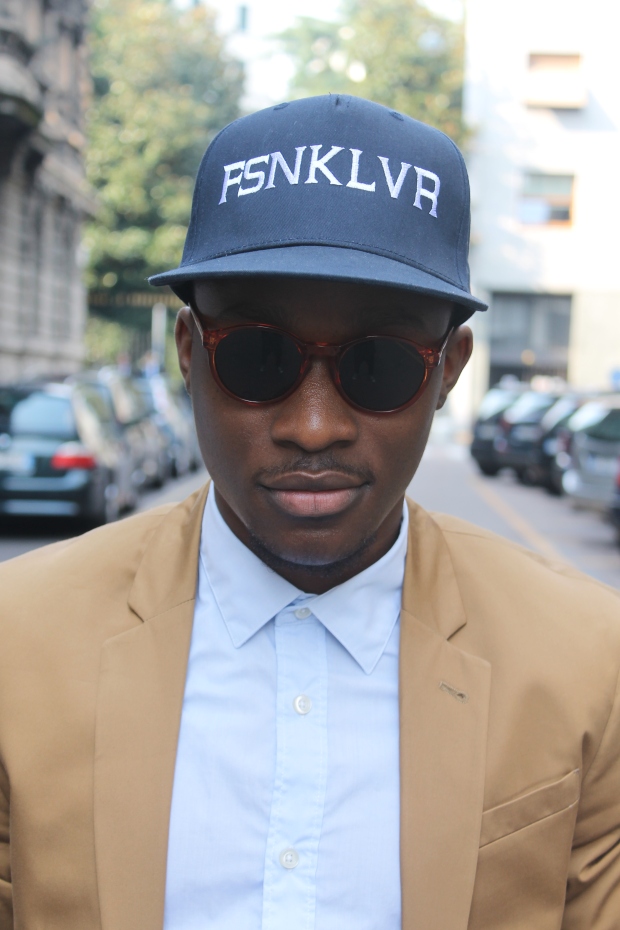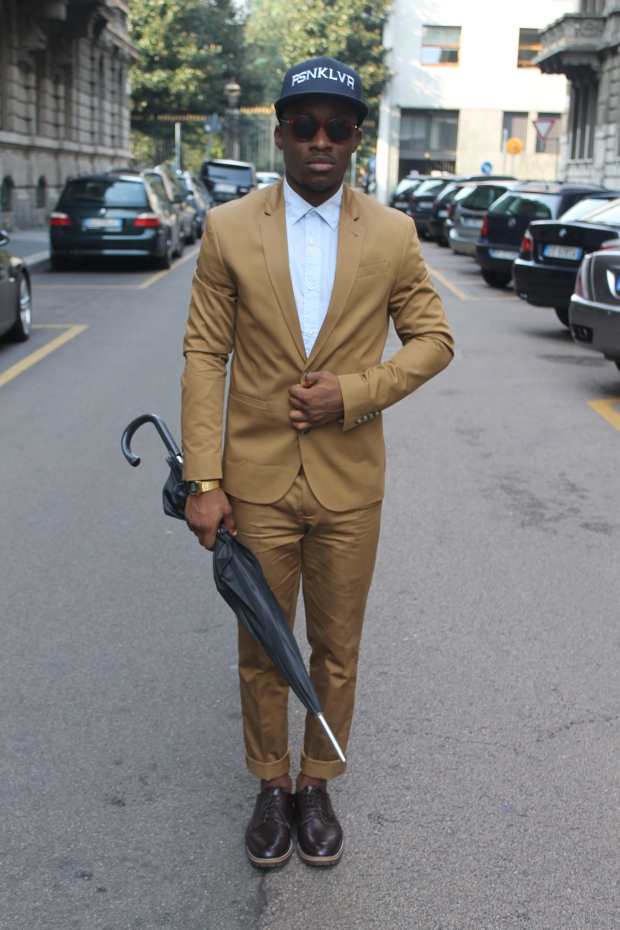Caramel Tailoring & Bespoke Runways
Milan fashion week has come to a wrap so i will share my looks that got the most press. I went for a suited up look for a whole day of shows, a one piece suit with matching pants and simple baseball cap with my brand name on it.
Shape is the essential part of tailoring that often takes hand work from the start. Good tailoring anywhere in the world is characterised by strongly tapered sides and minimal shoulder, whereas often rack suits are padded to reduce labour. More casual suits are characterized by less construction and tailoring, much like the sack suit is a loose American style.
There are 4 ways to make suits. Ready made and altered “sizes” or pre cut shapes; a convenience that often is expressed over time with wrinkles from poor shaping, leading to distortion; The made to measure that uses measurements, not shaping, to achieve things like style, lengths and horizontal measurements; The custom, bespoke or tailoring-designed suit that has interim half-made fittings and is cut from an actual personal pattern.
The acid test of authentic tailoring standards is the wrinkle that comes from poor tailoring. Rumples can be pressed out. Color choices also make a difference and how much you accesorize. Simplicity was my ideal outlook.
The silhouette of a suit is its outline. Tailored balance created from a canvas fitting allows a balanced silhouette so a jacket need not be buttoned and a garment is not too tight or too loose. A proper garment is shaped from the neck to the chest and shoulders to drape without wrinkles from tension.
Suits are made in a variety of fabrics, but most commonly from wool. The two main yarns produce worsteds (where the fibres are combed before spinning) and woollens (where they are not). These can be woven in a number of ways producing flannel, tweed, gabardine, and fresco among others.
The main four colours for suits worn in business are black, light grey, dark grey, and navy, either with or without patterns. In particular, grey flannel suiting has been worn very widely since the 1930s. In non-business settings or less-formal business contexts, brown is another important colour; olive also occurs. In summer, lighter shades such as tan or cream are popular.
On a final note, I think everybody’s got a presentation. Everybody looks a certain way because they want to convey a certain image. You look a certain way because you want people to listen to you in a certain way. The attention to details is the main focus, so bring a pen, take notes and leave a comment.







Some truly select content on this internet site , saved to bookmarks .
Hats off to your hat! That awesome and very clever.